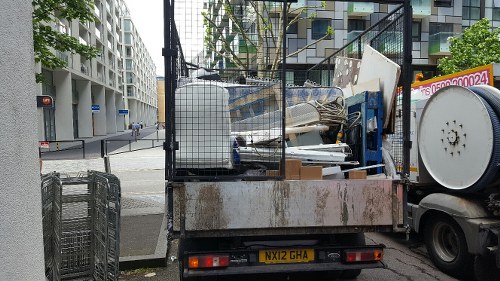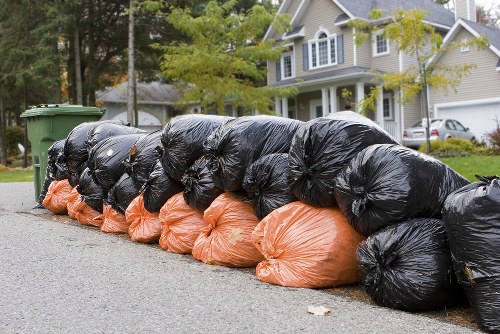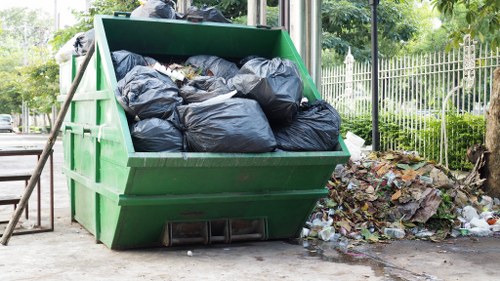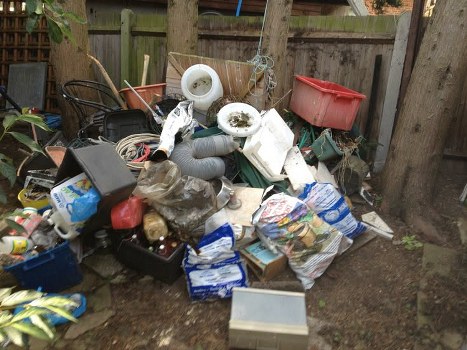Construction Waste Disposal in Hanwell

Construction waste disposal is a critical aspect of any construction project in Hanwell. Proper management ensures that the environment remains safe and clean, while also complying with local regulations. In this article, we delve into the various methods and best practices for disposing of construction waste effectively.
Hanwell, being a bustling area with numerous construction activities, generates a significant amount of waste. From small residential projects to large commercial developments, the need for efficient waste disposal solutions is paramount. Understanding the types of construction waste and the most suitable disposal methods can lead to more sustainable and cost-effective outcomes.
Moreover, implementing the right waste disposal strategies can enhance the reputation of construction companies, showing their commitment to environmental responsibility. This not only helps in building trust with clients but also aligns with broader societal goals of sustainability.
Understanding Construction Waste
[h3]Types of Construction Waste[/h3]
Construction waste encompasses a wide range of materials generated during the building process. Common types include:
- Concrete and masonry debris
- Wood and timber remnants
- Metals such as steel and aluminum
- Plastics and packaging materials
- Hazardous materials like asbestos and chemicals
Each type of waste requires specific handling and disposal methods to ensure safety and environmental compliance. Mismanagement can lead to severe repercussions, including legal penalties and environmental degradation.
Effective segregation of waste at the source is the first step towards efficient disposal. By categorizing waste early on, construction firms can streamline the disposal process, making it more manageable and less costly.
Importance of Proper Waste Disposal
Environmental Impact

Improper disposal of construction waste can have devastating effects on the environment. Landfills can become cluttered with non-biodegradable materials, leading to long-term pollution issues. Additionally, decomposing waste can release harmful substances into the soil and water, affecting local ecosystems and wildlife.
Recycling and reusing construction materials can significantly reduce the environmental footprint of construction projects. Materials like steel, wood, and concrete can often be repurposed, minimizing the strain on natural resources and reducing the overall waste volume.
Moreover, sustainable waste disposal practices contribute to lower greenhouse gas emissions. By reducing the amount of waste sent to landfills, we decrease methane production, a potent greenhouse gas that exacerbates climate change.
Regulatory Compliance

Hanwell, like many other regions, has stringent regulations governing construction waste disposal. Compliance with these laws is not only a legal obligation but also a moral one. Failure to adhere can result in hefty fines, project delays, and damage to a company's reputation.
Key regulations often include:
- Proper segregation and categorization of waste
- Use of licensed waste disposal services
- Adherence to safety standards for hazardous materials
- Regular reporting and documentation of waste management practices
Staying informed about local laws and continuously updating waste disposal practices can help construction firms maintain compliance and avoid potential legal challenges.
Waste Disposal Methods in Hanwell
Recycling and Reuse

Recycling is one of the most effective methods for managing construction waste. Materials such as metal, wood, and certain plastics can be recycled and repurposed for future projects. This not only conserves resources but also reduces the overall cost associated with waste disposal.
In Hanwell, numerous facilities specialize in recycling construction materials. Partnering with these centers ensures that waste is handled responsibly and efficiently. Additionally, some materials can be directly reused on-site, further minimizing the need for external disposal.
Implementing a robust recycling program requires careful planning and coordination. Construction firms must establish clear protocols for waste segregation, transportation, and processing to maximize the benefits of recycling initiatives.
Landfill Disposal
While recycling is ideal, not all types of construction waste can be recycled. Materials such as certain types of concrete and mixed debris often end up in landfills. It's crucial to select appropriate landfill sites that comply with environmental standards to mitigate any negative impacts.
Landfill disposal should be considered a last resort after all other waste management options have been exhausted. Minimizing landfill use aligns with sustainable practices and contributes to the overall health of the environment.
Ensuring that landfill sites are managed properly involves regular monitoring and maintenance. This includes controlling runoff, managing methane emissions, and preventing leachate from contaminating surrounding areas.
Hazardous Waste Management
Construction projects sometimes generate hazardous waste, including asbestos, lead paint, and chemical solvents. Proper handling and disposal of these materials are non-negotiable due to their potential harm to human health and the environment.
Specialized disposal services are required to manage hazardous waste safely. These services ensure that such materials are treated, contained, and disposed of in accordance with strict regulatory standards.
Training workers on the safe handling of hazardous materials is also essential. Proper education reduces the risk of accidents and ensures that everyone involved is aware of the necessary precautions.